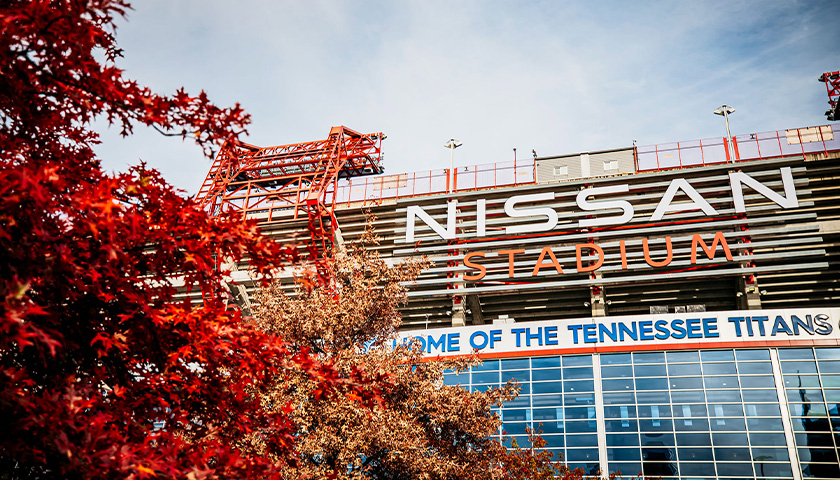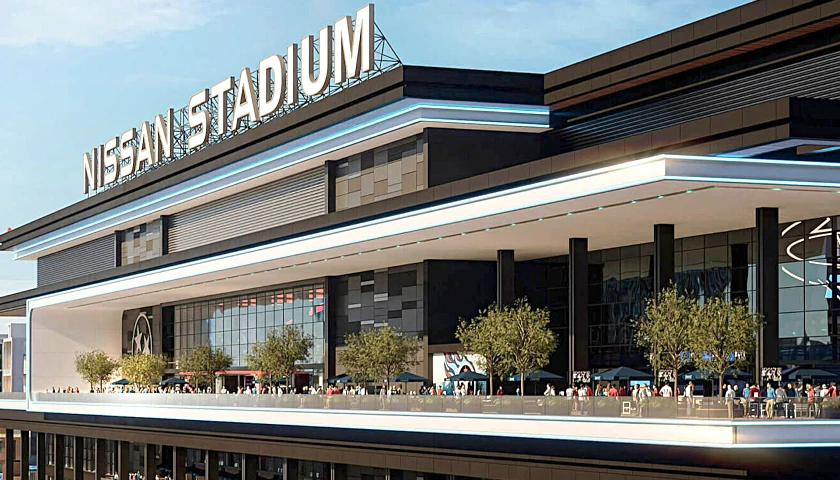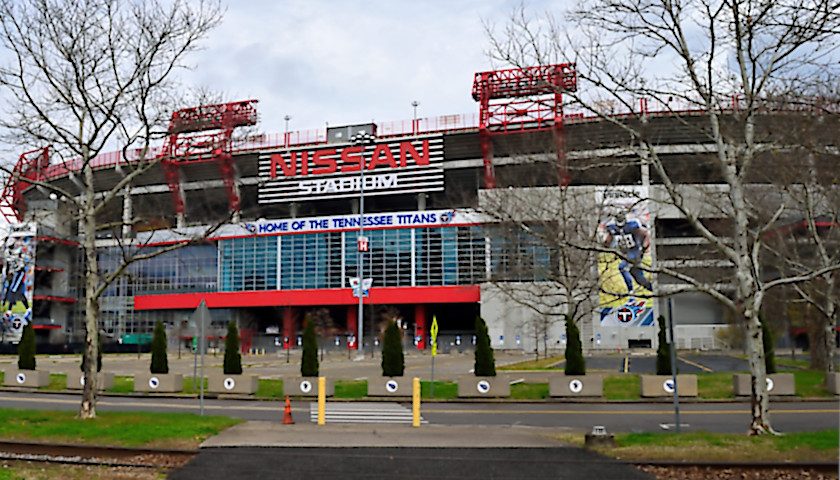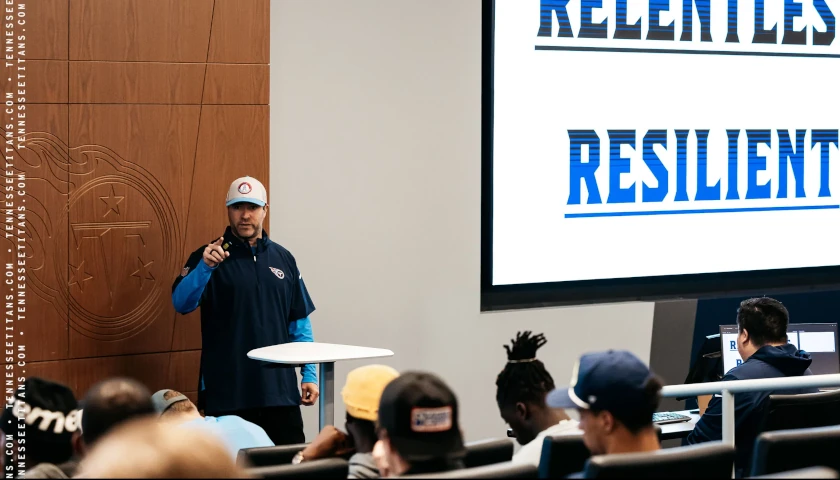The much-anticipated report from VSG (Venue Solutions Group), which claims to substantiate the estimated $2.1 billion in projected costs to renovate Nissan Stadium, was released Tuesday.
The previous estimates for an upgrade to the stadium to the “first-class condition” required in the 1996 stadium lease agreement at costs ranging between $1.75 to $1.95 billion is what is driving the argument for a new stadium.
A 159-page report in 2017 also from VSG indicated that nearly $300 million would have to be spent on the Nissan Stadium over the following 20 years for capital improvements. That report indicated the average expenditure was $12 million per year for maintenance, repairs and upgrades, The Tennessee Star reported. It also showed that $48 million of the identified capital expenses was to be carried by the Titans’ contracted vendors for retail space and food services, leaving $245 million for Metro to cover.
The newly-released report of 98 pages, prepared in conjunction with seven organizations, included data intelligence-fueled premium experiences company Legends Project Development (LPD); national building systems design firm Henderson Engineers; acoustics, theater planning and technology design consultants Idibri; Manhattan Construction Company (Manhattan); sports facility designers Thornton Tomasetti; and elevator and escalator consulting firm VDA, Inc.
The report includes a review of the master plan design for the $2.1 billion renovation developed by Gensler/Hastings in December 2021, a review of the Miami Dolphins Hard Rock Stadium listed as a comparable stadium in the 1996 lease agreement, and an assessment of the facility’s current condition.
The Gensler Sports Conceptual Design Package (dated December 1, 2021), VSG’s Facility Condition Assessment, (dated April 3, 2017), and a site assessment on August 30, 2022 along with industry expertise, project experience and facility renovation knowledge, were all factored into the findings, estimates, and conclusions provided by LPD and Manhattan.
Within their estimating exercise, LPD and Manhattan assumed that the construction would be performed between 2023 and 2026, both on- and off-season.
Projects referred to as “enabling projects” are those required to renovate and update Nissan Stadium in preparation for the renovations. Two separate spreadsheets included in the report estimate that the enabling projects will cost a total of $361,809,422.67.
Another $1,517,182,800.29 is Manhattan’s construction estimate for Gensler/Hastings master plan for renovation or new construction, as it is also referred to.
An additional $235,080,061 is estimated for post-renovation capital requirements between 2027 and 2039, which coincides with the end of the second extension period in the current lease agreement.
Manhattan states in its cover letter that, in its estimate, the company “tried to capture the costs needed to a) renovate and update the facility to keep it running for another 20 years, b) brining [sic] up to NFL standards, and c) provide new features to make the facility competitive for hosting major events and making it the ‘go-to’ spot overlooking downtown Nashville.”
As Council Member Sean Parker (District 5) pointed out on Twitter, the latter objective of Manhattan is not a requirement of the current lease agreement.
not in the lease, folks! pic.twitter.com/3KxHrXRXmd
— Siney Denny’s (@SeanForFive) October 31, 2022
The cost projections include a number of contingencies, including 10 percent for design, 10 percent for contractor, 10 percent for phasing/difficulty for the enabling projects phase, and 15 percent for the renovation phase in order to not disrupt the Titans’ play. A 10 percent contingency is for the project itself in both the enabling and renovation phases.
Additionally, the estimates include an allowance of 5 percent for cost escalation and supply chain.
Not clearly defined are the specifics of the work and scope of the enabling projects as compared to the renovation or new construction and whether any of the work done as an enabling project will be undone by the renovation or new construction.
For example, on the service level, where offices and locker rooms are located, $19,099,000 is estimated for the enabling project and $41,492,400 is estimated for the renovation, with the enabling projects representing 32 percent of the total cost for the service level. To refresh finishes in the team locker facility, $3,500,000 is included in the enabling projects, while $17,382,500 is estimated for demolition and construction of new team locker room facilities.
Similarly, $13,113,463 is included in the enabling projects for an exterior skin. In the renovation, $48,281,463 is listed for the exterior skin, with $10,625,000 for demolition of the existing skin.
On the press suite level, more than half of the $10,731,000 estimated cost in the enabling projects is for refreshing various finishes, and $8,848,000 is estimated for new construction in the same area.
Overall, 21 percent of the total hard costs are for the enabling projects versus the renovation projects. The number would be higher, except that there is $125,027,220 in identified expenses for areas not included in the enabling projects list, such as the 350 west upper deck and canopy, end zone theater boxes, club and outdoor deck bar, sports bar, and team store.
The sports bar and team store are each estimated to have a cost of $14,494,500.
Soft costs, identified as architectural/engineering, other required consultants, legal, testing and inspection, furnishings and equipment, insurance, project administration, utility fees/service as well as fees, permits and planning, represent 28 percent of the total construction cost. With the addition of DAS (distributed antenna systems), WiFi and technology upgrades, and scorecards at $40,000,000 and $50,000,000, respectively, the soft or indirect construction costs of the renovations is 40 percent.
The $235,080,061 identified for post-renovation capital improvements and upgrades from 2027 to 2039 includes a number of refurbishments such as the locker rooms, press area, premium spaces like suites and clubs, various technology, food and beverage, and retail stores. The major portion – 93 percent – would occur in years 6 to 10 after the renovation, meaning years 2032 to 2036.
The review of renovations to the Hard Rock Stadium, as a comparable facility to that of Nissan Stadium, covered the $1.329 billion escalated to 2023 costs in total renovations over the 2006 to 2017 time period, including an unsubstantiated 38 percent in soft costs.
Of note is that the major renovations between 2015 and 2017 included just $5 million per year in public funding from the county to team ownership – up to a maximum of $75 million – in exchange for luring big events like the Super Bowl.
Additional upgrades after 2017 were required in order to help support Formula 1 racing, tennis tournaments and other events.
The Facility Condition Assessment portion of the report followed the same format as that of the 2017 VSG report. A similar capital expense matrix for the four-year period of 2023 to 2026 accompanied the narrative, and totaled $37,110,275.
Council member Emily Benedict (District 7) said on Twitter that the VSG report was not the independent study she hoped or voted for.
https://twitter.com/emilyfor7/status/1587536158858280964
The resolution to approve the term sheet, along with two amendments, is scheduled to be taken up at the regularly scheduled meeting of the council Tuesday evening.
– – –
Laura Baigert is a senior reporter at The Star News Network, where she covers stories for The Tennessee Star.
Photo “Nissan Stadium” by Nissan Stadium.






With statements such as:
” c) provide new features to make the facility competitive for hosting major events and making it the ‘go-to’ spot overlooking downtown Nashville.”
It sounds like this thing is guaranteed to cost way more than necessary to maintain a “state of the art” facility. Whatever that is. It sounds like Bredesen and the city council sold the citizens a bill of goods that continues to saddle the city with extravagant expenses for the Titans playpen.